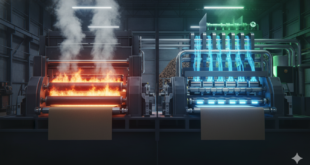The synthetic biology market is undergoing a profound transformation, driven by the advent of innovative approaches like cell-free technology. Once seen as a niche segment within the broader biotech landscape, cell-free systems are now emerging as a game-changer, offering unprecedented flexibility and efficiency in biomanufacturing.
The cell-free technology and cell-free system markets are rapidly expanding, driven by technological advancements, growing demand for personalized medicine, and innovative diagnostic tools. These overlapping but distinct areas are shaping the future of biotechnology, healthcare, and beyond. With a predicted compound annual growth rate (CAGR) of 8.48% from 2022 to 2030, the cell-free market is poised for transformative impact.
Understanding Cell-Free Systems and Technologies
Traditional synthetic biology, rooted in harnessing living cells (in vivo) to drive metabolic pathways for biomanufacturing, encounters significant challenges that limit its efficiency and scalability. The inherent complexity of living systems makes it difficult to precisely control gene circuits and monitor synthetic pathways, as the intricate interplay of cellular processes often introduces variability. Additionally, scaling up in vivo processes to meet industrial demands poses economic hurdles, especially for low-margin applications where the costs of maintaining viable cell cultures and optimizing yields can be prohibitive. Furthermore, the biological constraints imposed by living organisms—often referred to as chassis limitations—restrict productivity and the flexibility to reprogram cellular systems for diverse applications.
Cell-free synthetic biology represents a transformative approach to biological engineering, removing the constraints inherent in traditional cell-based systems. By utilizing extracted cellular components such as enzymes, ribosomes, and transcription factors in an open and controlled environment, this method bypasses the challenges associated with living cells. Issues like slow growth rates, resource competition, and stringent environmental requirements are eliminated, allowing biochemical reactions to occur in a highly optimized setting. This fosters rapid and precise synthesis of desired biological products, streamlining the process of biomanufacturing.
Cell-free systems refer to platforms and processes that function independently of living cells, typically involving cell lysates, extracts, or purified enzymes to synthesize proteins, study biological processes, or develop diagnostic tools.
Cell-free technology, a broader term, encompasses any methodologies or innovations that bypass living cells, including cell-free DNA/RNA analysis, synthetic biology, and biosensors. Together, these markets span diverse applications, from biopharmaceuticals to cutting-edge diagnostics.
Recent advancements have propelled cell-free synthetic biology from a niche research tool to a powerful platform for diverse applications. It now plays a critical role in biomanufacturing, enabling the efficient production of chemicals, biomaterials, and pharmaceuticals. Additionally, its potential in biosensing and therapeutic development underscores its promise as a pivotal technology in shaping the future of synthetic biology.
Applications and Innovations
Cell-free protein expression (CFPE) systems have become indispensable in healthcare and diagnostics, particularly in response to global health crises like the COVID-19 pandemic. One notable example is a groundbreaking innovation from researchers at the University of Toronto, who developed a cell-free system to identify SARS-CoV-2 genome sequences. This technology facilitated rapid diagnostic testing by eliminating the need for RNA purification, showcasing the potential of CFPE in accelerating diagnostic processes and vaccine development. As the technology matures, it promises to revolutionize not only disease detection but also therapeutic strategies in healthcare.
In biomanufacturing and enzyme engineering, CFPE offers substantial advantages by enabling rapid prototyping of biosynthetic pathways and optimizing them before scaling up in live cells. This flexibility is crucial for industries focused on enzyme engineering, which represented a significant market share of 34.97% in 2021. CFPE allows for the creation of highly tailored enzymes for industrial applications while removing the challenges posed by cell viability, thereby improving production efficiency and reducing costs. This innovation is unlocking new possibilities for producing a wide range of bio-based materials and chemicals in a sustainable manner.
Moreover, CFPE is increasingly integral to high-throughput screening applications, particularly in enzyme optimization and biocatalyst discovery. By facilitating rapid identification and testing of potential biocatalysts, CFPE systems significantly reduce the time and cost associated with developing new enzymes and metabolic pathways. The integration of advanced technologies like machine learning and automation further accelerates these processes, streamlining the development of novel biotechnologies and enhancing the capabilities of industries reliant on biocatalysis, from pharmaceuticals to environmental solutions.
Market Dynamics and Growth Potential
The market for cell-free technology is poised for rapid expansion, with industry projections indicating a compound annual growth rate (CAGR) exceeding 20%, ultimately reaching an estimated value of $3.8 billion by 2031. This robust growth reflects the increasing recognition of cell-free systems’ potential across a range of industries, driven by their ability to offer sustainable, efficient, and scalable solutions for biomanufacturing and beyond.
One of the primary drivers of this growth is the rising demand for sustainable biomanufacturing solutions. As industries strive to reduce their environmental impact, cell-free technology presents a cleaner alternative to traditional chemical synthesis. It facilitates the production of bio-based plastics, biofuels, and other eco-friendly materials, contributing to a circular economy and helping companies meet sustainability goals. Additionally, advancements in synthetic biology tools, such as protein engineering, AI-driven enzyme optimization, and high-throughput screening, are enhancing the efficiency and scalability of cell-free systems, making them more attractive for large-scale applications.
Cell-free systems are also making significant inroads across a diverse range of industries, from pharmaceuticals to agriculture. In the pharmaceutical sector, cell-free protein synthesis is transforming drug discovery by enabling faster, more cost-effective production of proteins and therapeutic compounds. In agriculture, cell-free enzymatic pathways are being explored for innovative solutions such as carbon capture and recycling, demonstrating the versatility and wide-reaching potential of this technology. As these applications continue to expand, the market for cell-free systems is set to play a critical role in shaping the future of biomanufacturing and sustainable industrial practices.
Market Segmentation and Growth Insights
Regional and Global Trends
Key Players in the Market
Challenges and Opportunities
While cell-free technology offers vast potential, several challenges must be addressed for its widespread adoption. One of the primary challenges is the high production cost, as extracting and stabilizing enzymes or other cellular components for use in cell-free systems can be expensive. This drives up the cost of developing and scaling applications, particularly in industries where cost-efficiency is crucial. Additionally, technical barriers persist, especially when trying to replicate the complexity and efficiency of cell-based systems. For example, some biosynthetic pathways that require intricate cellular processes are still difficult to achieve with cell-free systems, limiting their potential for certain applications.
Despite these challenges, the opportunities in the cell-free technology market are substantial. One key advantage is the ability to perform biochemical reactions under extreme conditions, such as high temperatures or in the presence of toxic substances, making it ideal for industrial biocatalysis. This opens up new possibilities in areas like waste management, sustainable manufacturing, and the production of specialized chemicals. Moreover, cell-free systems enable rapid prototyping, allowing researchers to quickly test and optimize genetic circuits and metabolic pathways without the need for living cells. This not only speeds up research and development timelines but also reduces the resource intensity of traditional cell-based experiments, ultimately accelerating the pace of innovation in biotechnology. With these opportunities, the cell-free technology market is poised for growth, offering transformative solutions across various industries.
Future Outlook
The future of cell-free technology lies in its ability to integrate seamlessly with other synthetic biology tools. Combining cell-free systems with advanced computational models, machine learning, and automated workflows will further enhance their efficiency and scalability.
Moreover, as industries like pharmaceuticals, agriculture, and materials science increasingly adopt sustainable practices, cell-free technology is well-positioned to become a cornerstone of the synthetic biology market.
Conclusion
Cell-free technology represents a paradigm shift in biomanufacturing, offering a versatile and sustainable approach to producing biomolecules and chemicals. With its growing adoption across industries and continuous advancements in synthetic biology, the market for cell-free systems is set to flourish.
As the world moves toward a more sustainable future, cell-free technology will undoubtedly play a pivotal role in reshaping the synthetic biology landscape.
References and Resources also include:
https://www.fairfieldmarketresearch.com/report/cell-free-system-market
 International Defense Security & Technology Your trusted Source for News, Research and Analysis
International Defense Security & Technology Your trusted Source for News, Research and Analysis




